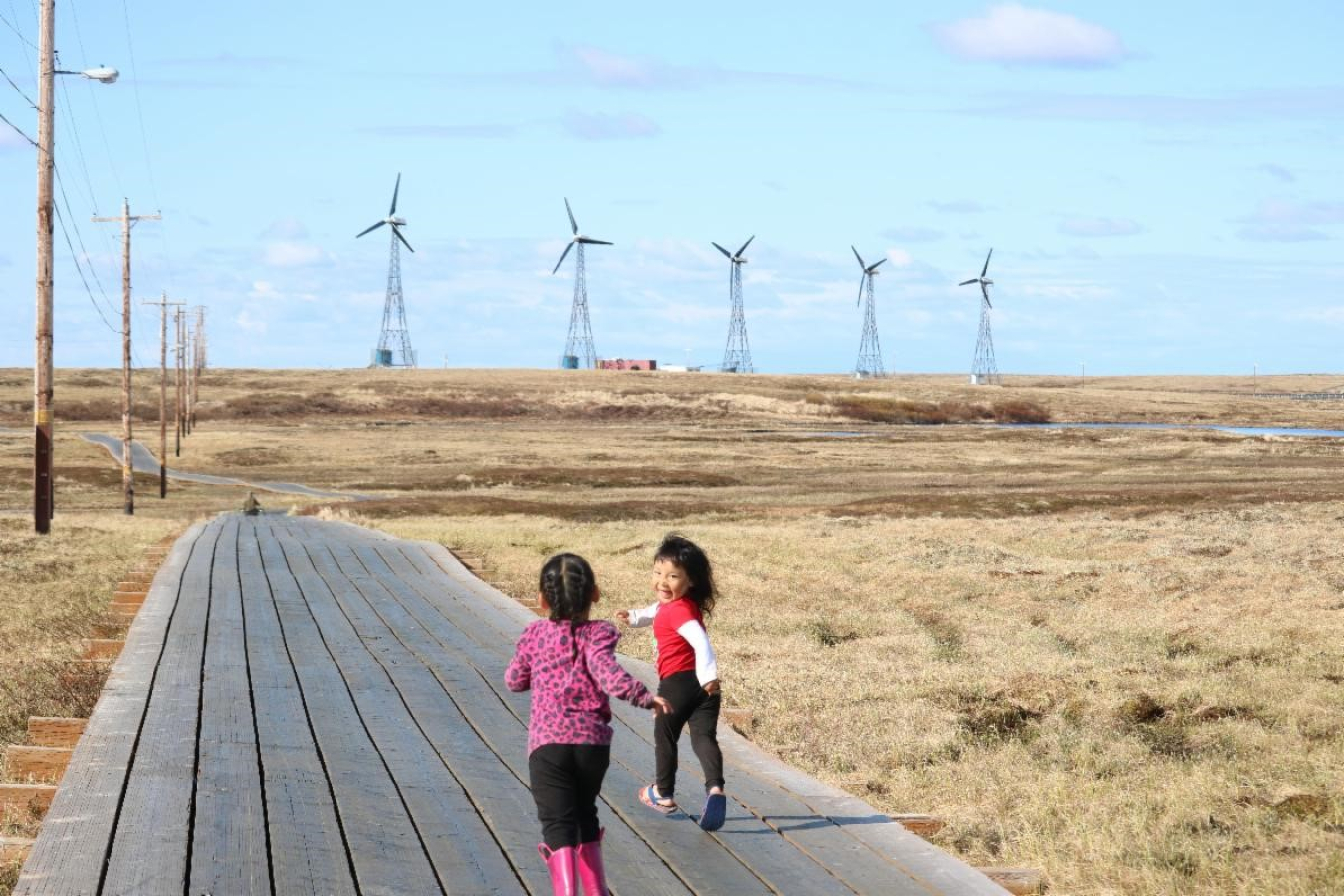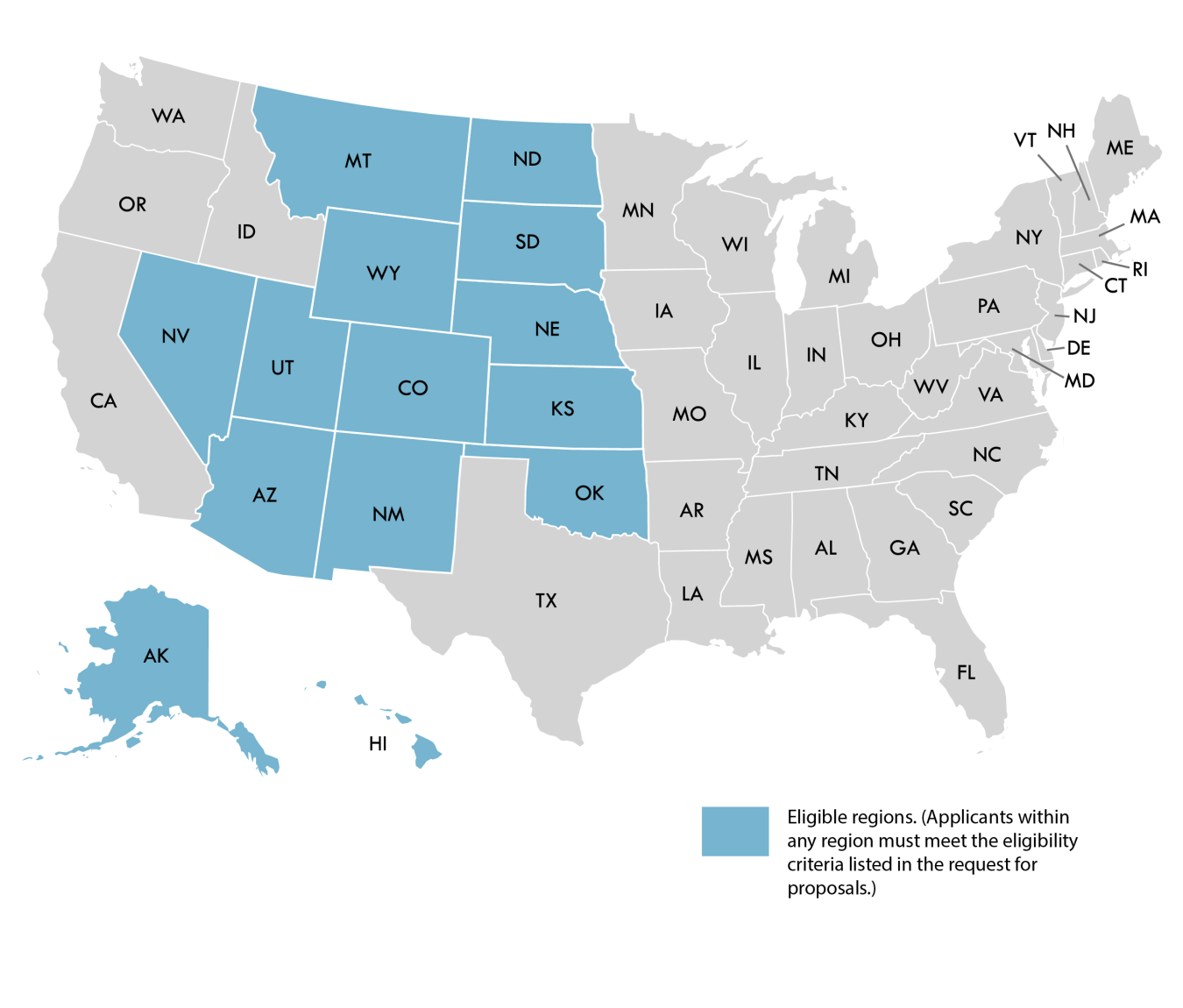Participants in the Community Microgrid Assistance Partnership (C-MAP) will receive technical support and/or funding from the U.S. Department of Energy (DOE) Office of Electricity (OE) to design or deploy a microgrid that aligns with community-defined priorities or to improve performance of an existing microgrid technology.
Microgrids that generate power from renewable energy reduce the dependency on imported fuels, contributing to community self-sufficiency and resilience.
Applications are now open. View program details below. Applications closed on sam.gov on Jan. 31, 2025.

Off-Grid Innovation
C-MAP recognizes that each community has different needs and is in its own stage of adopting microgrid technology. OE is offering various opportunities to meet proponents where they are, from supporting early-stage development planning to helping communities improve or repair existing microgrids.
Outcomes of participating in C-MAP may include:
- Stronger operation of existing microgrids
- Funding-ready proposals for microgrid development
- Lower or stabilized energy costs from using locally available resources
- Reduction in greenhouse gas production and improved air quality
- Relationships with local development organizations and power sector technical supports among industry and local colleges and universities.
Access Microgrid Assistance
The pilot program will focus on communities in Alaska and Hawaii, and Indigenous Tribes, primarily in the Great Plains and Southwest.
Important Dates
- C-MAP opportunity announced: Oct. 2, 2024
- Informational webinar: Nov. 11, 2024. Recording below.
- Deadline to apply: Jan. 31, 2025, at 5 p.m. EST
- Communities selected: Spring 2025.
Every community has unique interests and is in its own stage of microgrid development. C-MAP offers four different topic areas that provide funding and other resources to meet key stages of development. Proposals will be evaluated based on the published criteria, but here are example projects that illustrate each topic:
- Topic Area 1: A group of communities form a regional collaborative to improve microgrid maintenance through activities such as cross-training of maintenance staff, coordination of maintenance procedures, or implementation of monitoring systems for system operations.
- Topic Area 2: A group of communities form a regional collaborative for microgrid development and planning. Development could mean assessing energy generation and load for each community and devising a typical microgrid system configuration that fits common characteristics across the group.
- Topic Area 3: A community that has previously completed a general feasibility study for a microgrid takes the next step to develop a detailed conceptual design of an advanced microgrid system.
- Topic Area 4: A community with an existing microgrid is experiencing operability issues. They work with C-MAP experts to analyze performance and options for improvements, such as upgrading system controls for active load control, or upgrading a power converter to maximize the output from energy storage or an expanded renewable energy system.

Submit Your Proposal
OE is now accepting competitive proposals from state or local government, Tribal organizations, and non-profits. Find the instructions on the sam.gov opportunity page.
If you are interested in multiple tracks, you may submit multiple proposals, but do not combine topics into one proposal.
There are several one-time actions that must be completed before submitting an application to this funding opportunity. It is vital that applicants address these items as soon as possible, as some may take several weeks. These actions are:
- Register in the federal government’s System for Award Management at https://sam.gov/content/entity-registration.
- Register your entity or get a Unique Entity ID (UEI) to get started doing business with the federal government. You can also verify if your entity has an existing UEI.
- Provide the valid UEI number in the application.
Does developing a technical proposal pose a challenge? C-MAP can help. Email [email protected] to connect with a partner organization that can help refine proposals to match local resources, goals, and priorities. Submit requests no later than 4 weeks before the submission due date.
Webinars
Community Microgrid Assistance Partnership: Proposal Webinar
C-MAP held an informational webinar, Nov. 11, 2024, to cover the structure, technical focus, and eligibility criteria for the first Request for Proposals (RFP).
Regional Partners
Communities can rely on their project coordinator and regional partners for support services, whether that means workforce development for energy jobs, raising capital, planning for long-term sustainability, or other challenges they face in developing and maintaining microgrid systems. C-MAP partners also facilitate knowledge sharing for further microgrid innovation. Active partners include:
- Alliance for Tribal Clean Energy
- Alaska Center for Energy and Power
- Renewable Energy Alaska Project
- Arctic Energy Office Energy Ambassadors
- DeerStone Consulting
- Office of Indian Energy
- Hawai’i Natural Energy Institute
- Hawaiʻi State Energy Office
FAQ
Review frequently asked questions.
The goal of C-MAP is to empower communities to climb the energy value chain by improving operational efficiency of microgrids and incorporating more locally available renewable energy, enhancing energy resilience and reliability, and lowering customers’ bills. The structure of the partnership brings together much needed knowledge and data to advance innovation in the microgrid technology market. Decreasing microgrid capital costs and reducing project development, construction, and commissioning times is a strategic priority of OE.
C-MAP supports communities, or groups of communities, that are either developing or have developed microgrid energy systems. Funds can be used to identify technical needs for improving or expanding an existing microgrid system and support the repair or replacement of failed equipment. For example, this award could cover a detailed assessment or design needed to undertake a microgrid redevelopment or enhancement. Funding can also be used to train local utility staff in successful microgrid design, operation, or optimization.
Yes, C-MAP can support capacity building for microgrid operations or maintenance through workforce development programs led or coordinated by a regional partner organization. Topic Area 1 on Regional Microgrid Community Operations Assistance would be a good fit for this type of proposal.
Individual community projects are expected to be completed in 18 to 24 months. Once the project is concluded, communities will continue to partake in the knowledge sharing and resources offered by their peers in the microgrid innovation network.
The microgrid innovation network provides a supportive pathway for communities interested in developing or improving microgrid systems to gain experience with the technology and identify funding streams. Not only does it provide service to energy burdened communities, it is also representative of their voices, priorities, and perspectives. Members include communities seeking technical assistance, organizations that support the development of sustainable energy systems, and microgrid users interested in helping others navigate the challenges they have faced. Knowledge sharing among engaged partners will take various forms including an annual in-person workshop.
Yes. Communities are encouraged to apply to C-MAP for focused microgrid assistance that may complement support received from other federal programs, such as Connected Communities, Communities LEAP, the Energy Transitions Initiative Partnership Project, or the Office of Indian Energy.
The competitiveness depends on the total number of communities that apply. When a community is not selected, C-MAP will notify the applicant and the regional partner will continue their support to revise the proposal, and identify other resources or funding opportunities that can better address the specific challenges of the community.
C-MAP uses the U.S. Department of Energy definition of a microgrid as, ‘‘a group of interconnected loads and distributed energy resources within clearly defined electrical boundaries that acts as a single controllable entity with respect to the grid.” Community microgrids are often designed to operate primarily in grid-connected mode. However, to be eligible for C-MAP the microgrid is expected to operate independently or in island-mode for long periods of time.
This opportunity is focused on underserved and Indigenous communities that are either remote, rural, or islanded. For purposes of C-MAP, underserved is defined as:
- 30% of the community population is classified as low income; AND
- There is high or severe energy burden (median spending of household income on energy bills ≥6%).
Indigenous communities include Tribal Nations, Native Americans, Alaska Natives, and Native Hawaiians.
Interested parties that do not specifically meet these data points are still encouraged to contact their regional partner and describe how they may be eligible.
Contact Us
OE leads C-MAP with management and coordination by the National Renewable Energy Laboratory. Dan Ton manages the OE Microgrid R&D Program and is the OE lead for C-MAP. Questions and comments can be submitted to [email protected].
Keep up with the Office of Electricity’s work in advanced microgrid research, development, and demonstration.

